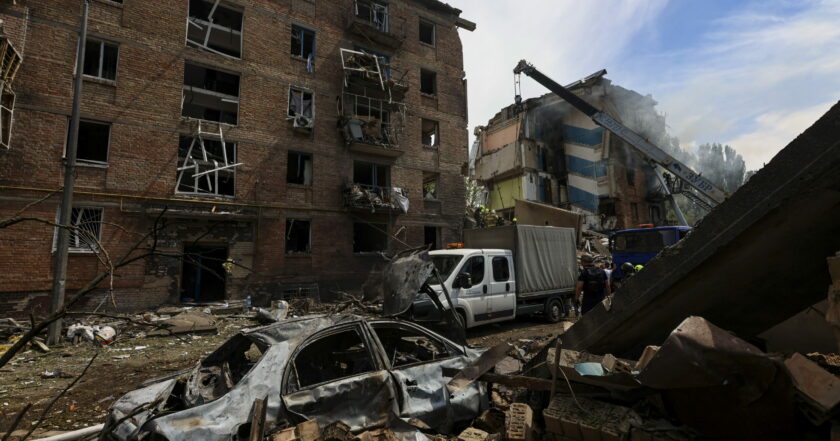NATO issues climate impact assessment of Russia’s war against Ukraine

У Шевченківському районі влучання у житловий будинок у Києві 8 червня 2024 року. Фото: Рубрика
The North Atlantic Alliance has published the Annual Report of the NATO Secretary-General on the assessment of the impact of climate change on security. For the first time, it includes an analysis of the impact of climate change on NATO's potential adversaries and strategic competitors, in particular, the impact on the climate of full-scale Russian aggression against Ukraine.
Rubryka writes about this, referring to the Telegram of the Ministry of Defense of Ukraine.
What is the problem?
As noted in the report, for the first time, the Alliance considered the impact on the climate of Russia's full-scale invasion of Ukraine.
"Military conflict is a significant driver of climate change and environmental damage. Russia's war of aggression is a vivid example: In addition to human suffering, the invasion has had devastating climate and environmental impacts, with far-reaching consequences across Ukraine and beyond its borders," noted in the Annual Report on page 28.
The document notes that accelerating climate change has "profound implications for the security of the Alliance." It stresses the need to keep NATO fit for purpose in a rapidly changing environment.
What is the solution?
The report responds to NATO's commitment to increasing members' awareness and understanding of climate change's impact on security. This will help NATO adapt to this changed strategic and operational environment.
How does it work?
The assessment is part of the ambitious Action Plan on Climate Change and Security, which NATO leaders adopted at the Brussels Summit in 2021.
Based on previous editions, it examines the impact of climate change on each of NATO's operational domains — sea, land, air, space, and cyber, as well as NATO's missions and operations, civilian resilience, and preparedness.
The Climate Change and Security Impact Assessment presents case studies in three geographic areas:
- NATO presence in Kosovo;
- Rovajärvi shooting range in Finland;
- a joint Canada-US early warning radar system for the North Warning System (NWS).
The report also evaluates the characteristics of:
- submarines,
- naval helicopters,
- military transport aircraft in a changing climate.
We will remind you that the total damage to the climate caused by the Russian Federation during the two years of the full-scale invasion of Ukraine is $32 billion.
Moreover, Russia will continue to damage the environment even after the war because the reconstruction of damaged and destroyed infrastructure will be a large source of emissions. These emissions are largely related to the production of cement and steel and, according to forecasts, will account for as much as 56 million tons of carbon dioxide.


















































